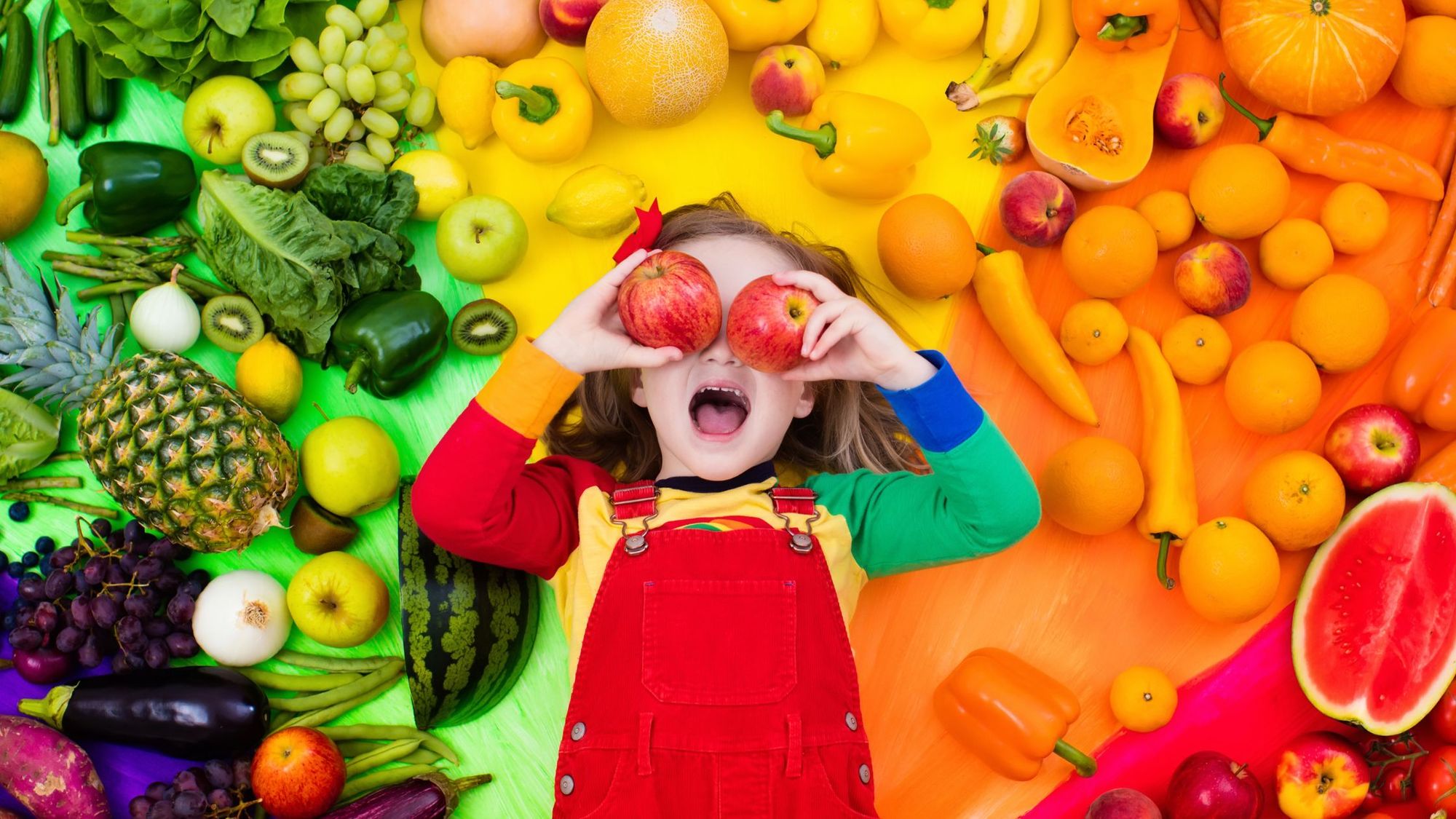
Preparing vegetables for kids can be a nightmare sometimes, and forcing your kids to eat them could escalate into family dinner drama filled with tears and harsh words. Although you may have the best of intentions, coercing your children to eat food that they dislike may result in an unhealthy association with food and bad memories for meal times. It’s really a parental concern to strive for mealtime balance because you want your kids to reap the nutrients from veggies since they’re a part of the five main food groups, but at the same time, it’s not uncommon to see young children turn their noses up at vegetable dishes. Getting kids to eat vegetables could be challenging, especially for kids who are picky eaters.
If you’re lucky, you have one of those kids who embrace a variety of veggies and many other new foods. But if your kids are more difficult eaters, fret not, and don’t blame yourself. A Harvard study noted that all children are picky eaters in some way or at some point in their childhood, since food and what they eat is a way for them to assert their independence. Moreover, some kids could have a very stubborn temperament and just be naturally pickier than others so they shun all sorts of vegetables for kids.
Some kids may need exposure to different ways of preparing vegetables, for them to slowly get used to eating and enjoying vegetables. Prevent picky behavior by introducing different foods, especially a lot of cut-up fruits and vegetables for kids. Veggies provide important nutrients for growth and development, so introducing them gently to kids is vital, even if they are somewhat resistant. Starting early also means you could encourage more well-rounded eaters. If you’re having a hard time getting your young ones to love vegetables, these tips may help.

Start Introducing Vegetables for Kids Early
A child’s independent streak usually kicks in at age two, which is why there’s a phase dubbed “the terrible twos”. If you want to increase the likelihood of your baby loving dishes with vegetables for kids you have to start feeding them vegetables early to avoid pickiness. Offer different varieties of veggies at various meals.
As much as you’re tempted to coddle your young kids because they hate mashed broccoli or steamed spinach, don’t cook them a separate kid’s meal. Model good behavior and let your children eat what everyone on the table is eating. You can’t expect your kids to be adventurous with veggies if you’re not doing the same thing. Research shows that parental influence is one of the most dominant aspects that determine a child’s eating behavior and food choices.
Don’t Get Discouraged, and Keep Offering Vegetables For Kids
If your kids refuse a specific vegetable, don’t throw in the towel right away. Instead, keep the food preparation and portion size in mind. Offer the same veggies using various cooking methods, and have your children start with two to three bites. Having smaller sizes will prevent tantrums because they won’t be overwhelmed compared to a full serving.
More importantly, pay attention to what your child enjoys. Perhaps they don’t like cauliflower bulbs but will eat mashed cauliflower disguised as mashed potatoes. By the same token, they may not like sauteed spinach but will be more receptive to a spinach omelet with cheese. Some children also prefer cold veggies instead of hot ones, and vice versa.

Pay Attention to Food Prep and Make Eating Time Extra Fun
Remember who the older generation discouraged children from playing with their food. Do the opposite so your kids will have a healthier relationship with food, especially veggies. Instead of boring vegetables for kids cut into strips, use small veggie or cookie cutters in the shape of stars, flowers, and hearts. You can also use basic shapes like circles and triangles to make different designs akin to what bento artists use to create beautiful meals. Use colorful plates to make meals more enticing.
When food is presented in a fun way, children form a positive association with the experience. Remember, the appearance of food matters, which is why high-end restaurants take pains to garnish plates. That’s because people also eat with their eyes first before they even taste the food. When veggies look appetizing and fun, it may decrease your children’s anxiety around meals and alleviate the pressure to eat. Utilizing a fun plate with various cut-up vegetables for kids empowers children to touch, feel, see, and smell the food. They can even engage their hearing by snapping a french bean in half or squishing a pea. The whole experience is a sensory adventure instead of a mealtime battle.
Get Kids Involved With Shopping and Meal Prep
Help your children see veggies as their allies by asking them to help make a list and bringing them with you to the store. Allow them to handle, bag, and weigh produce to get them comfortable with vegetables for kids. Tell them what the veggies are, how it tastes, and what they can do for their bodies.
Even if you don’t go to the store, you can also do this activity online. And, whether in-store or delivery, ask your kids to help you unpack the groceries. Then, as you plan your menu for the week, ask for their assistance. Have one child pick one or two veggies and how they want them prepared. You can also engage them with age-appropriate activities during meal prep such as:
- Allowing smaller kids to drop tear soft greens like spinach or kale and add them into a blender
- Asking them to decorate pizzas with colorful veggie toppings
- Older kids can help with shredding veggies for muffins and pancakes
- With supervision, older kids can also chop and saute
Getting your kids involved with shopping and food prep could increase their interest in veggies. And when they’re part of the preparation, they feel more invested and excited to eat what they’ve made. It’s a win-win for all because you not only get them to eat nutritious food, but you also teach them life skills!
Stay Creative and Use Their Favorite Foods to Incorporate Vegetables for Kids
For kids who are terribly fussy and struggle to accept veggies on their own, you may have to be extra creative. You can incorporate veggies into their favorite meals so they will be more inclined to try them. For example, you can make the following:
- Add chopped-up broccoli into meatballs
- Include zucchini noodles in spaghetti
- Make your own veggie chicken nuggets
- Shred veggies into eggs with cheese and morph them into muffins
- Make cauliflower rice or cauli tater tots
- Sneak grated veggies into meatloaf
There are numerous ways to sneak in vegetables for kids in child-approved recipes that are specifically made for those who are not a fan of vegetables. When veggies are hidden in scrumptious meals, your picky eater will be none the wiser. And maybe eventually, you can slowly introduce the idea that veggies aren’t bad and they’ve actually been eating them all this time.
Consider a Consult With a Professional for Extreme Pickiness
A kid’s temperament could play a role in mealtime fussiness. Sometimes, being picky with food could be a part of a bigger issue, as opposed to being solely a problem on its own. For example, a study conducted by researchers from Duke discovered that picky eaters are likely to have symptoms of depression and anxiety. Hence, children who have trouble controlling their emotions tend to be pickier about what they put in their mouths.
If your child or children are expressing irrational behavior towards foods that is beyond normal child stubbornness against veggies, to the point that you worry if they are getting enough nutrients, it may be prudent to discuss things with your pediatrician. Consult with your family doctor, especially if there are behavioral challenges along with picky eating. It’s better to tackle these things head-on instead of waiting for them to escalate.
It may also help if everyone in your family takes a CircleDNA test to learn about genetic nutritional needs. This is an at-home, non-invasive DNA test that only requires a simple cheek swab. The swab only feels like a tickle in the mouth so you don’t have to worry about the kids being uncomfortable. This DNA test will give you over 500 reports on information like your ancestry, disease risk, temperament, personality, dietary guidelines, and more. With these reports and DNA insights, you can find out the best diet plan for each person in your family based on the way the body handles food groups like fats, dairy, carbs, and more, or whether or not anyone has a genetic sweet tooth. When you unlock this genetic nutrition profile, you can understand your family’s nutrient needs based on your genetics and optimize meal planning for overall wellness, for yourself and for your kids.
References:
- Study gives insight — and advice — on picky eating in children (Claire McCarthy MD) https://www.health.harvard.edu/blog/study-gives-insight-and-advice-on-picky-eating-in-children-2020060920004
- Factors Influencing Children’s Eating Behaviours (Sylvia Scaglioni et.al.) https://www.ncbi.nlm.nih.gov/pmc/articles/PMC6024598/
- Little Miss Bento (Shirley Wong) https://www.littlemissbento.com/When picky eating is a sign of psychological distress (Alison Knopf) https://onlinelibrary.wiley.com/doi/full/10.1002/cbl.30084







Comments are closed.